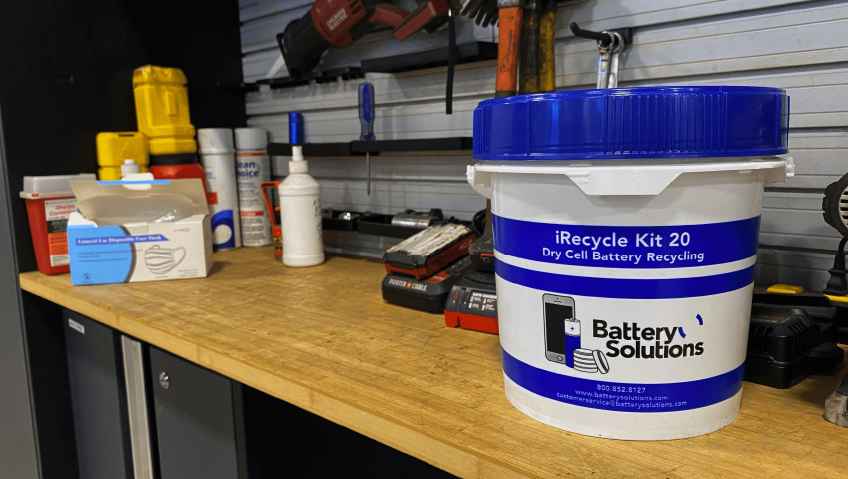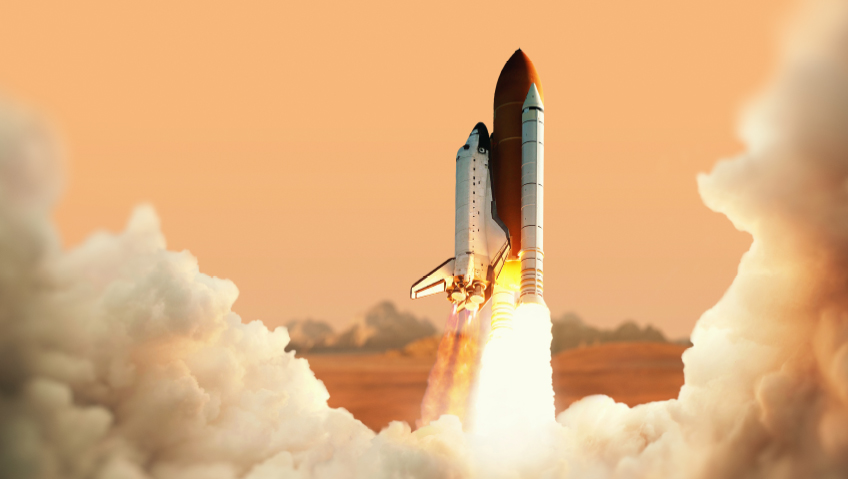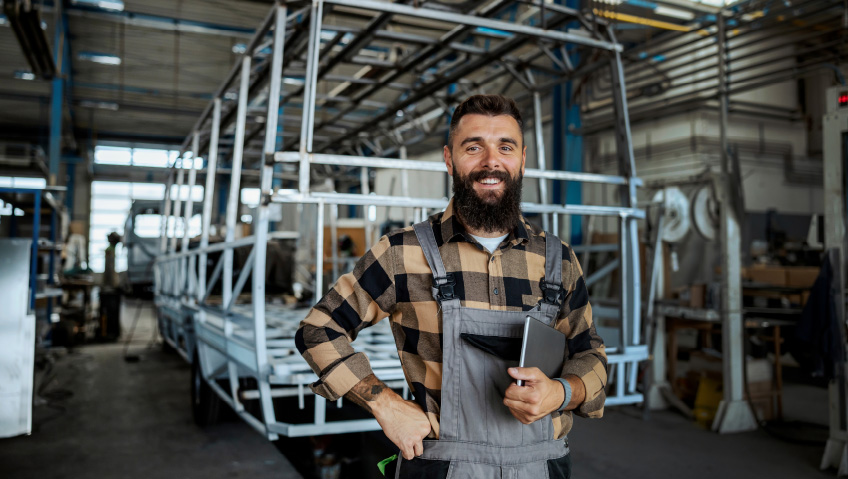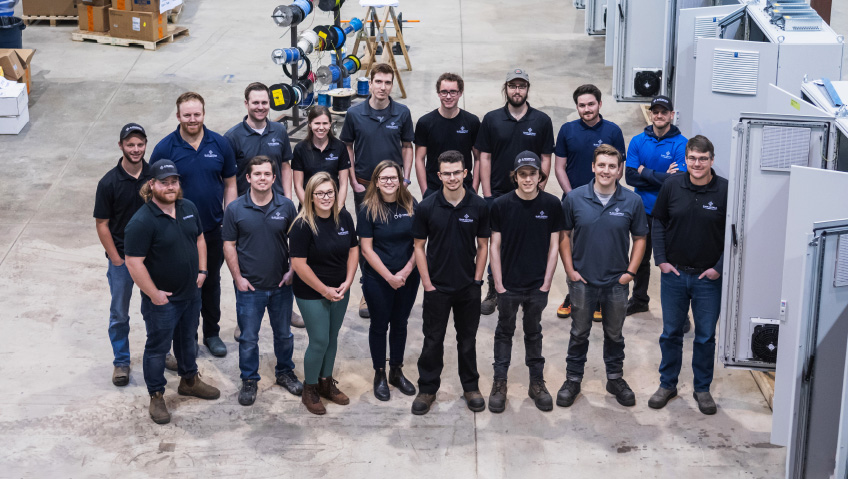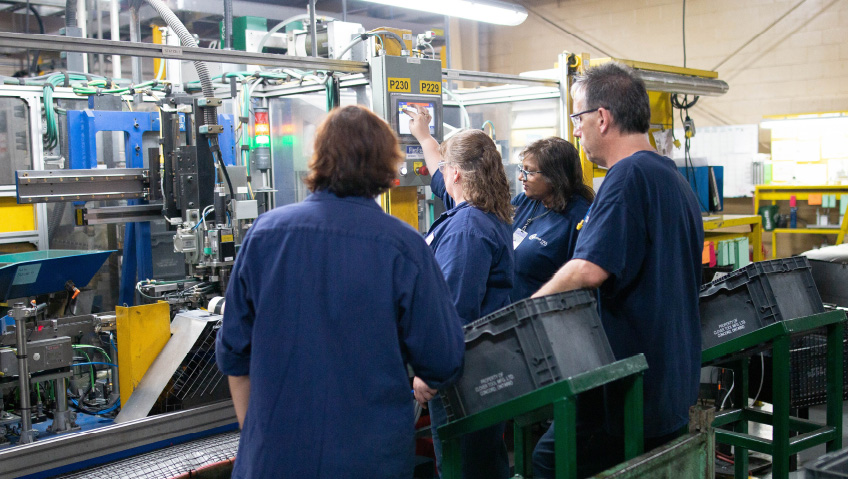In the past, batteries ended up in landfills or banished to boxes in the basement and forgotten. But today, as a new awareness has revealed the environmental fallout of used batteries, recycling has become the option for battery disposal going forward.
Batteries power our daily life. Everything from phones to cars, from watches to computers and the toys our kids’ play with, has a battery stuck in there somewhere. But what happens when the phones get old and watches stop ticking, or the car battery goes on the blink?
This is not exactly a new question to Battery Solutions, which has been in the business of battery recycling management for more than 25 years.
“I think the key for us and really for battery recycling overall is that you want to make people understand that they can recycle all types of batteries,” says Thomas Bjarnemark, CEO of Battery Solutions.
So let’s shine some light on our relationship with batteries.
According to the Environmental Protection Agency, Americans purchase almost 3 billion household batteries like AA and AAA, and D and C annually. And the stats say that in the same time the average person will throw out eight batteries. Pulling out the calculator, that’s about 2.6 billion dead batteries hitting America’s landfills every year.
These numbers are even more startling when you consider that batteries, generally speaking, can be almost completely recycled. This is where Battery Solutions comes in, striving to recycle all parts of all kinds of batteries.
From batteries to micronutrients
“I’ll give you the top line,” says Danielle Spalding, Director of Marketing for Battery Solutions. “Basically, alkaline is still the most common household battery type used. And when we collect those batteries, we have battery-processing technology onsite that separates the battery, from its casing right down to the actual manganese and zinc inside the battery. And from there, those micronutrients are used for fertilizer.”
Yes, you read that right. Nearly 96 percent of battery components can go back into circulation, including as fertilizer for agriculture. Kind of amazing when you think about it.
Battery Solutions started in 1992 in Howell, Michigan. Back then, the founder would collect, recycle and resell car batteries. Eventually the company expanded to recycling household batteries such as alkaline batteries, laptop batteries and power tool batteries, to name some.
Silent revolution
A lot of things have changed since 1992, including the cars we drive. Now, electric and hybrid vehicles are taking a growing chunk of the automobile market. Not only do these vehicles reduce the amount of emissions released into the atmosphere, but when they come to the end of the road, they’re recyclable.
Recycling electric and hybrid vehicles represents the ongoing evolution of Battery Solutions. The parts that are recycled from vehicles go toward new batteries, and new steel is available from steel recovered from the vehicles.
“This creates a new stream of material in the supply chain for manufacturers and allows them to enhance their products by using material from recycled cars,” Spalding says. “We’re really proud to provide end-to-end management of electric and hybrid vehicles. We pick them up with our fleet of specialized hazmat drivers, then haul them to our facility for disassembling.”
From there, the vehicles’ battery systems are broken down into traceable components including the outer casing, the core and the BMS, or battery management system.
“We bring it down either to a module or a cell level, depending on the need of our customers,” Bjarnemark says. “Some are looking for a certain component. They want to know about their traceability and their recyclability. Others are looking for certain plastics. Ultimately those materials go back into the secondary commodity for reuse.”
Meet the circular economy
When Bjarnemark refers to the “secondary commodity for reuse” he is talking about what’s known as the circular economy. To get a better sense of why the concept of the circular economy is becoming more important, we need to take a mini (and perhaps overly simplified) lesson in the history of economics.
Most parts of the world function within what’s known as the linear economy, which has been the dominant force for several centuries. From the 1700s, the textile industry, which was followed by the introduction of steam-engine power, introduced new systems and technology that greatly increased the output of what we could produce. This period was followed by many other advances, such as the understanding of how to generate, use, and control electricity, and the invention of the automobile.
While we made all kinds of technological leaps, as time went by, we really didn’t change our approach to things. We carried on chopping down, digging up and harvesting resources from the earth, as always. Still today, factories transform these raw materials into things that we want, like home electronics and the latest smartphone. Then, after using them for a while, we throw them away and buy new again.
Needless to say, the environmental impact of the linear economy has not been great for our planet. By and large, people understand that recycling the goods that we use is important, but historically we really haven’t invested much in developing sustainable approaches to manufacturing.
While Canada and many European governments incentivize recycling, for American businesses battery recycling and sustainability efforts are largely an economic decision and a way to support their community. People want to do the right thing, they just need to know how. So, as we transition toward a society that places more emphasis on protecting the environment, we are also seeing more efforts to recycle and reuse materials by both large corporations and small business.
Battery Solutions works with as many partners as possible to make sustainability a priority. Businesses may not only help the environment by providing local depots for the collection of used batteries, they may also support their bottom line by delivering batteries to recycling companies.
And that’s why Battery Solutions is so important to all of us. By focusing on recycling materials and then reintroducing them to new sectors, the company contributes to the “circular economy,” turning recyclables into new “things” in factories.
Use and re-use
“The reuse-market for parts from electric vehicles is a very fast growing market segment within recycling in the circular economy,” Bjarnemark says.
“We do a lot of work with teams that are focused on reuse. One example is working with both our customers and local universities to help reuse electric vehicles. The outer casings are used for garden beds. They’re also using the fertilizer that we provide micronutrients for. So we’re able to not only grow the garden in the actual electric vehicle case, but also get micronutrients for the plants from old batteries.”
Like every other business, the COVID pandemic has impacted Battery Solutions, particularly the move to working from home that so many people have undertaken.
“I think that some of the changes in behavior we’ve seen in the pandemic, such as people working from home, relying more on video conferences and remote working, is here to stay,” Bjarnemark says. “Consumer electronics was already a very big source of batteries for us. And it will be even more so as a result of the pandemic.”
And even though the pandemic has put many things for people and businesses in flux, some things remain constant.
As Spalding puts it: “It comes back to collection and education that are the things that we focus so heavily on. We want to be here to support the sustainability of what we do, and to help the general public understand that battery recycling can be an easy and turnkey way that we can all support the environment.”

